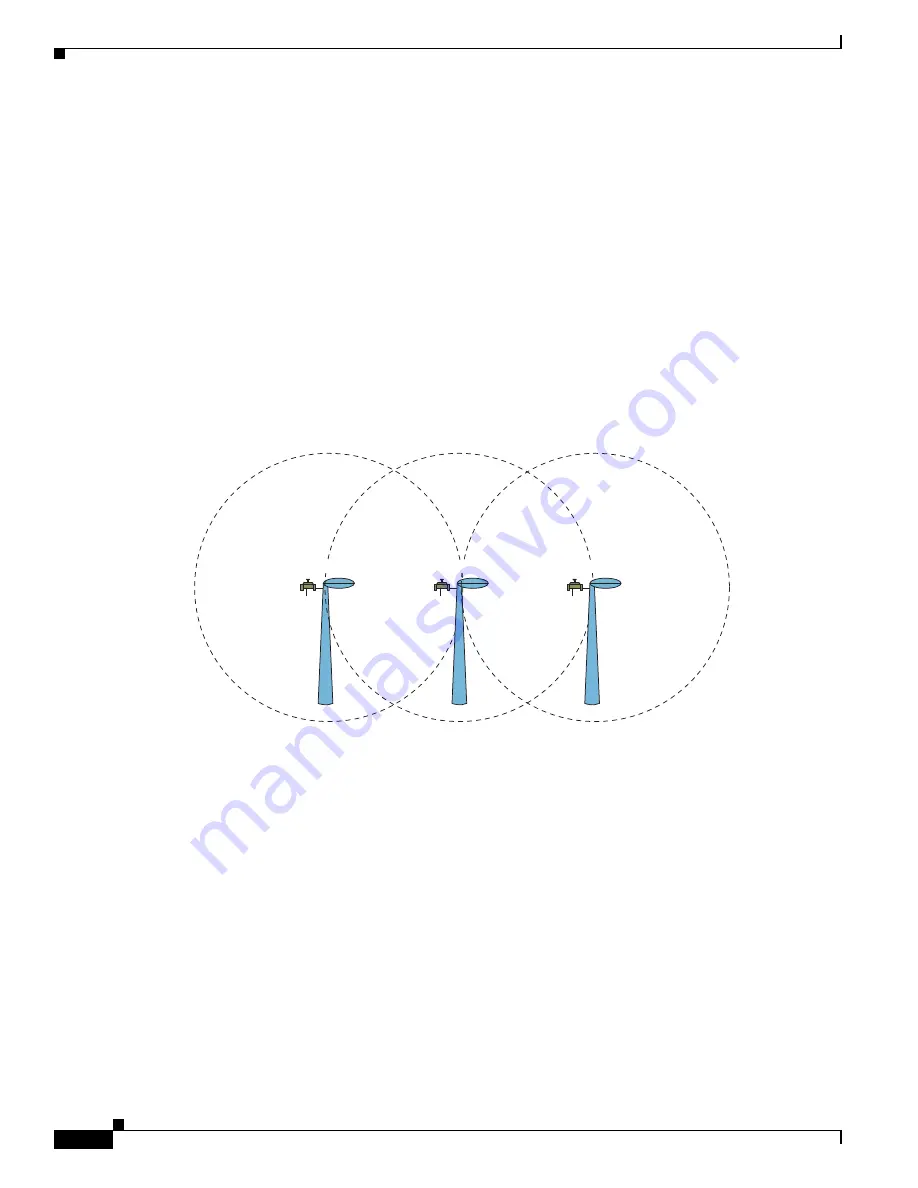
42
Cisco Aironet 1520, 1130, 1240 Series Wireless Mesh Access Points, Design and Deployment Guide, Release 6.0
OL-20213-01
Site Preparation and Planning
Fresnel Zone Size in Wireless Mesh Deployments
To give an approximation of size of the maximum Fresnel zone to be considered, at a possible minimum
frequency of 4.9 GHz, the minimum value changes depending on the regulatory domain. The minimum
figure quoted is a possible band allocated for public safety in the US; and maximum distance of one mile
gives a Fresnel zone of clearance requirement of 9.78 ft = 43.3 x SQR(1/(4*4.9)). This clearance is
relatively easy to achieve in most situations. In most deployments, distances are expected to be less than
one mile, and the frequency greater than 4.9 GHz, making the Fresnel zone smaller. Every mesh
deployment should consider the Fresnel zone as part of its design, but in most cases, it is not expected
that meeting the Fresnel clearance requirement is an issue.
Hidden Nodes Interference
The mesh backhaul uses the same 802.11a channel for all nodes in that mesh, and this can introduce
hidden nodes into the WLAN backhaul environment, as shown in
.
Figure 24
Hidden Nodes
shows the following three MAPs:
•
MAP X
•
MAP Y
•
MAP Z
If MAP X is the route back to the RAP for MAPs Y and Z, both MAP X and MAP Z might be sending
traffic to MAP Y at the same time. Because of the RF environment, MAP Y can see traffic from both
MAP X and Z, but MAP X and Z cannot see each other. This means that the carrier sense multi-access
(CSMA) mechanism does not stop MAP X and Z from transmitting during the same time window; if
either of these frames is destined for a MAP, it is corrupted by the collision between frames and requires
retransmission.
Although all WLANs at some time can expect some hidden node collisions, the fixed nature of the MAPs
make hidden node collisions a persistent feature of the mesh WLAN backhaul under some traffic
conditions such as heavy loads and large packet streams.
148451
MAP X
MAP Y
MAP Z






























